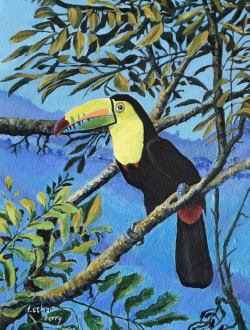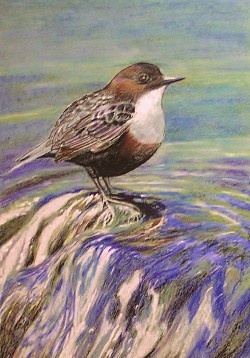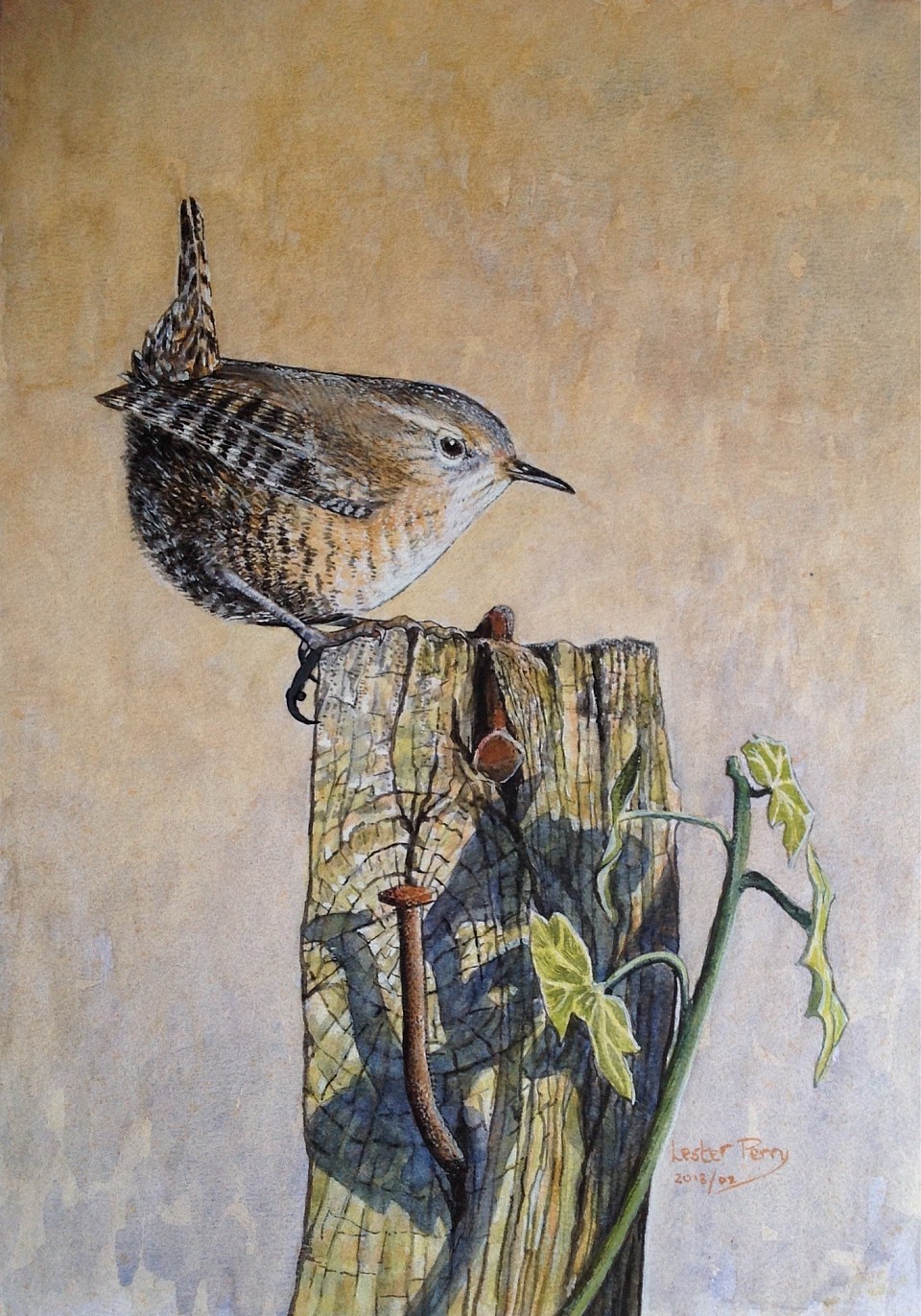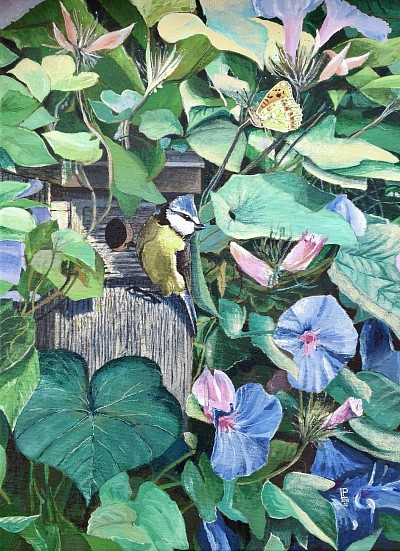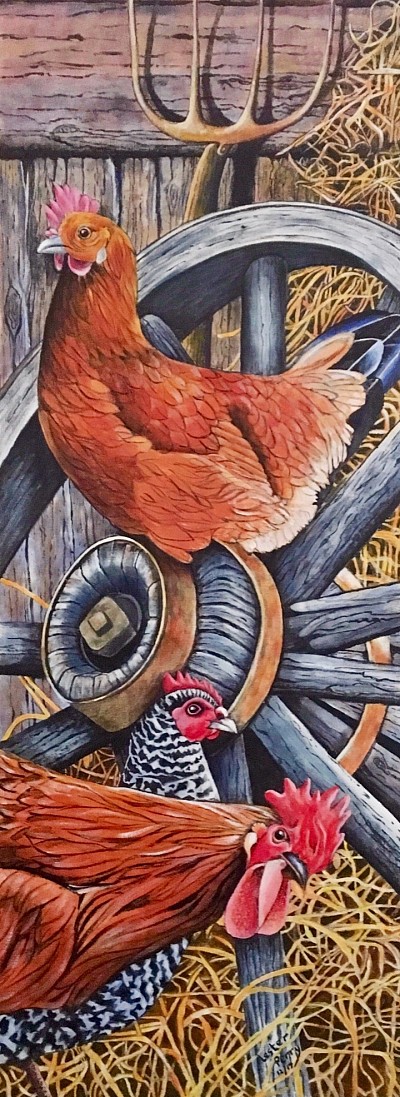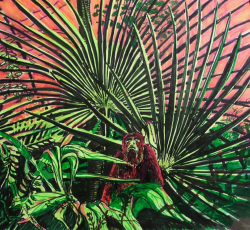GALLERY 6 Fine art paintings created by Lester Perry landscapes, portraits, still life, pet portraits all in various styles
BIRDS
Contained within this gallery are paintings of birds of various shapes and sizes that have been painted over the years. From an early age I have always been interested in the natural world and a copy of the Observer Book of British Birds was my starting point. Many of their other titles investigate similar areas of natural history in a bite size form that can capture the imagination of anyone and especially the young.
............................ CLICK ON PAINTINGS TO ENLARGE ..........................
LITTLE OWL.
ABOUT.
Although mainly nocturnal, the little owl can be spotted in the day hunting invertebrates (especially worms), small mammals, reptiles, amphibians and small birds. It is often seen perched a telegraph pole, an old parkland tree, along a hedgerow, or on a rock; from these positions, it quietly scans the ground for prey.
HOW TO IDENTIFY.
The little owl is small and brown, with a short tail and yellow eyes.
LONG EARED OWL.
HOW TO IDENTIFY.
The long-eared owl is mottled brown, with big, orange-red eyes and long wings. Long 'ear tufts' provide its common name. The similar short-eared owl is paler, with yellow eyes and short ear tufts and is usually found near grassland and saltmarshes.
BLUE TIT
ABOUT.
Smaller than the great tit, the blue tit is also a bird of woodland, parks and gardens. It nests in holes in trees, but is just as happy to use nestboxes. Blue tits are active feeders, hunting out insects and spiders among the smaller branches and leaves of trees in woodlands.
HOW TO IDENTIFY.
The blue tit is a colourful little bird with a blue cap, white cheeks, black eye-stripes, a green blue back, yellow belly, and blue wings and tail.
CHICKENS IN THE BARN
Enjoyed painting this piece greatly as it shows the inquisitive nature of chickens forever on the quest for food. Our small number of chickens exhibit all the same qualities and reveal the complex structure of the social network and hence so called pecking order that every flock establishes.


